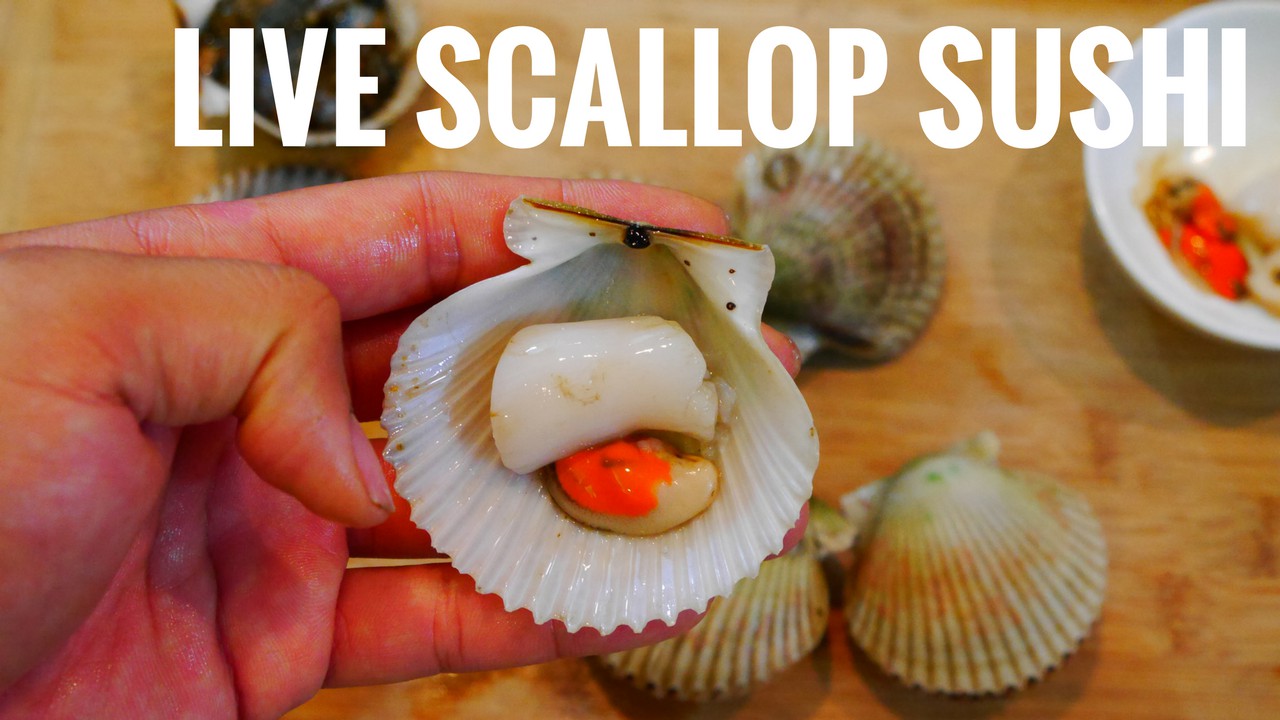
Scallop Sushi
Scallop sushi, also known as Hotate in Japanese, is a luxury item in many sushi restaurants. Most chefs serve large U-10 (10 or less in a pound) dry sea scallops dredged from the ocean floors. However, the scallops I used in the video below were Bay Scallops harvested from the west coast of Florida around Crystal River. The area is rich with shallow water sea-grass in pristine water, the perfect combination for these scallops to thrive in.
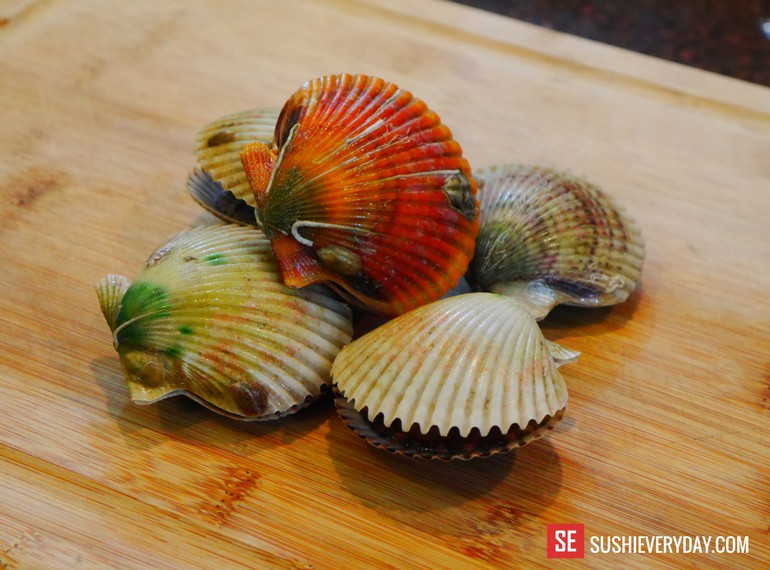
Since bay scallops are much smaller compared to sea scallops, you can’t make them into ordinary nigiri sushi. Instead, I prefer to cut them into smaller pieces and make Gunkan style sushi. This way, the seaweed (nori) acts as an edible cup that helps hold in the scallop. (Gunkan means battleship in Japanese and the sushi style is suppose to resemble one)
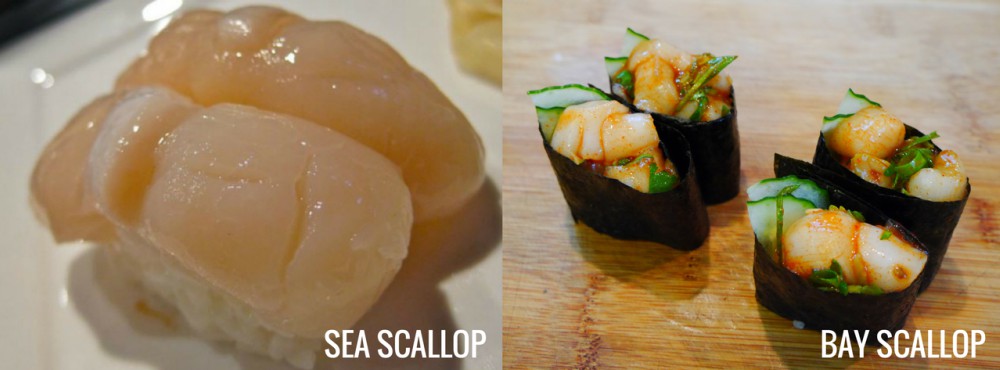
What Part of the Scallop is Edible?
Every part of the scallop is edible. However, the adductor muscle and the roe are typically the only proteins served. The digestive gland and gills have very little food value and are usually discarded. Many Chinese chefs will steam scallops on the half-shell with the roe, which is considered a delicacy in Asia.
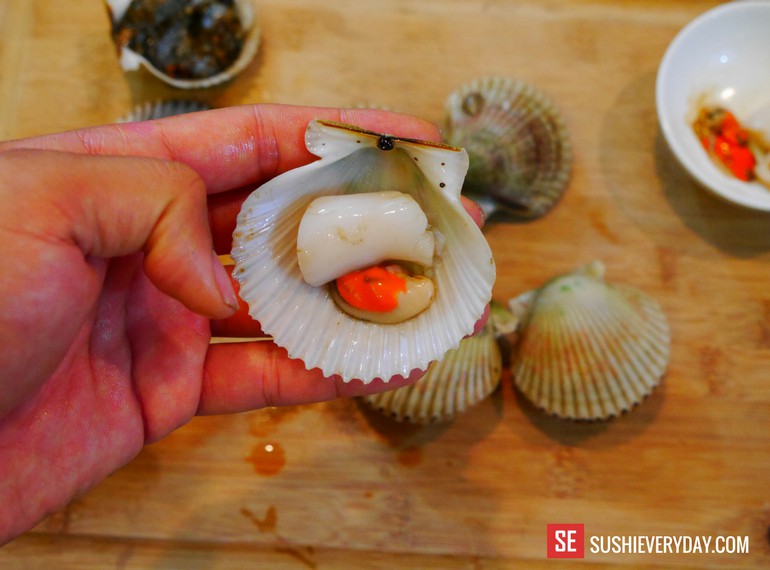
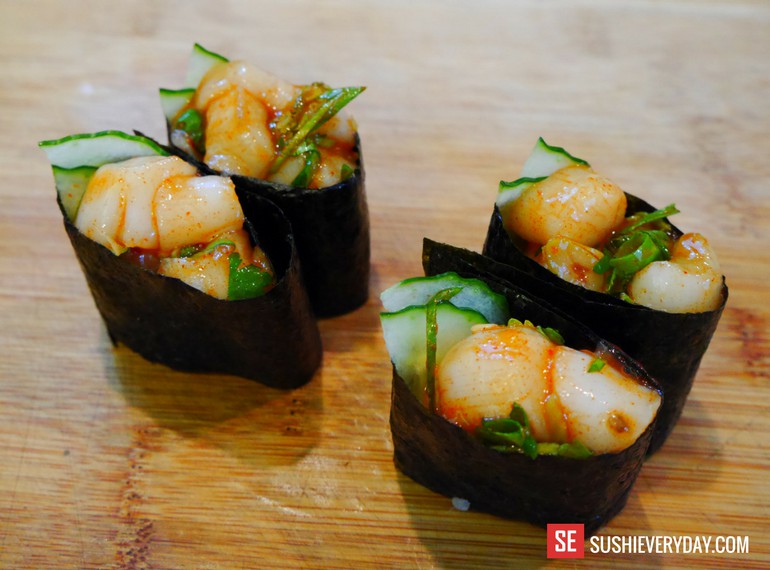
Difference Between “Dry” and “Wet” Scallops
Catching your own scallop is a luxury most people don’t have. So when buying scallops, just remember, not all scallops are sold the same. Scallops are separated into two categories, “Dry” or “Wet”. If you want the best quality with no additives, then you’ll want “dry” scallops. Dry means that they have never been treated with moisture retaining chemicals. On the other hand “wet” scallops means they have been treated with sodium tripolyphosphate. STP is an additive used to add water weight to seafood and is also commonly used in shrimps too.
The good news, is that it is quite easy to discern between the two. Wet scallops displayed at the store are typically more white and are often soaking in its own liquid. On the other hand, natural dry scallops have a light creamy color (some are orange) and should never be soaking in its own water.
Furthermore, wet treated scallops tend to sweat heavily when it’s being cooked. If you have ever pan seared scallops and end up with a puddle of white liquid in the pan, chances are those were STP treated. The health effects of STP treated seafood is debatable, but aside from health reasons, I personally wouldn’t pay extra $ for added weight
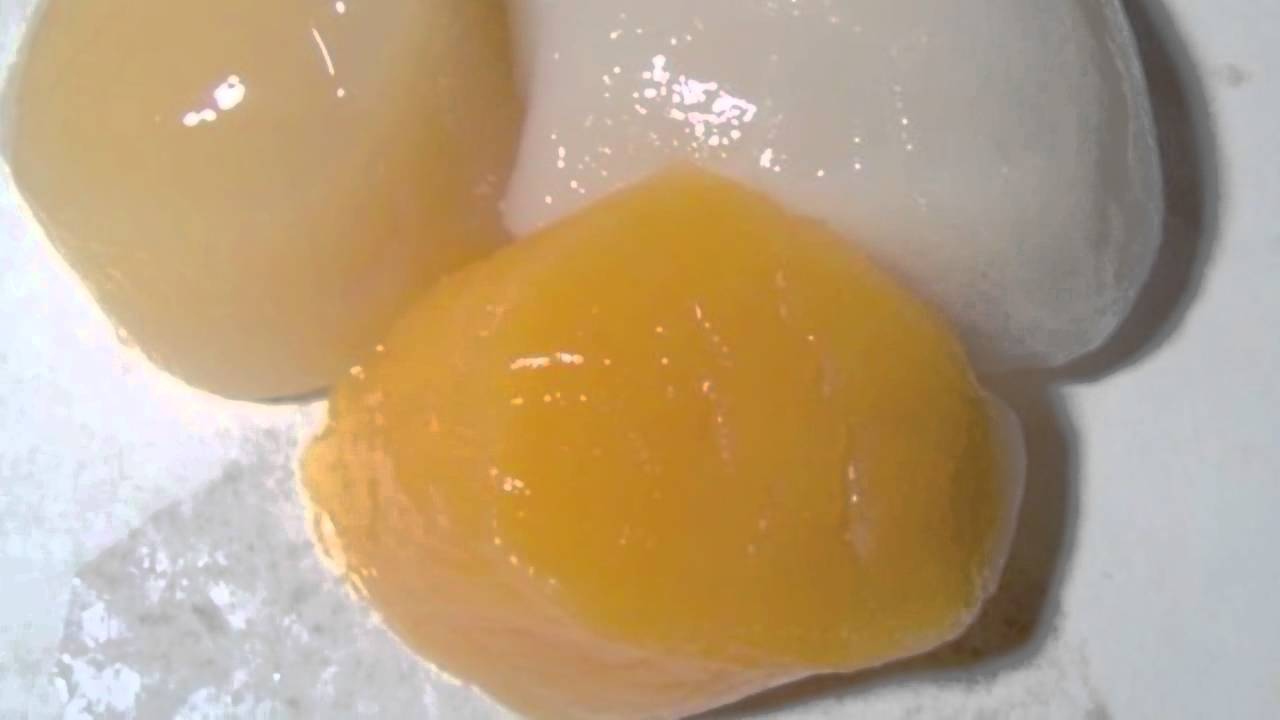
Easy Guide to Buying Scallops:
“Dry” Scallops:
-Creamy color (some are light orange)
-Never sits in its own liquid
-Doesn’t sweat when cooked
-Taste sweet and savory
-More expensive (expect to pay at least $20/lb for sea scallops at retail)
“Wet” (Treated) Scallops:
-White in color
-Often sits in a white cloudy liquid when on display
-Sweats when cooked (liquid in frying pan)
-Loss of flavor (less savory taste)
Learn how to Steam Scallops
Learn How to Make Shrimp Sushi
Watch Video!
Recipe:
Fresh Bay or Sea Scallops
Kimchee Base
Scallion
Cilantro
Sushi Rice
Nori Sheets (Seaweed)
More Info on Florida Scallops at Florida Fish and Wildlife Conservation


